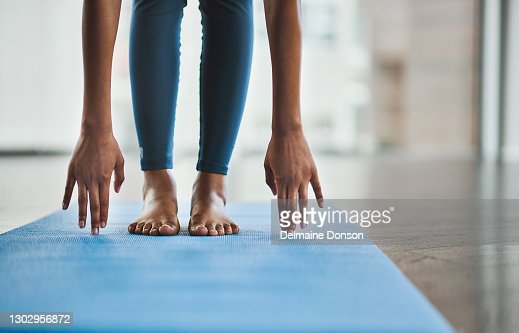The many benefits of stretching

Shot of an unrecognisable woman practicing a yoga routine at home
One of the most significant benefits of stretching, especially for athletes, is the increased improvement of flexibility. A more extensive range of motion means that your muscles can work more efficiently and that you can move more freely. For athletes, this means being able to perform their sports-specific movements with greater ease and grace.
Stretching also helps to reduce the risk of injury. When muscles are tight and inflexible, they are more susceptible to strains, pulls, and tears. Stretching regularly helps to keep muscles loose and flexible, which reduces the risk of injury during physical activity. This is particularly important for athletes who engage in high-impact sports such as basketball, football, or soccer.
Another benefit of stretching is improved circulation. When you stretch, blood flow to your muscles increases, delivering essential nutrients and oxygen. This can help to reduce muscle soreness and promote faster recovery after exercise. Improved circulation also helps to keep muscles healthy and nourished, reducing the risk of muscle imbalances and injury.
That raises the question: How can athletes stretch effectively? First, it is essential to warm up before stretching. This can be achieved through light exercise such as jogging or cycling. Warming up also helps to increase blood flow to the muscles, making them more pliable and less prone to injury during stretching.
When beginning to stretch, it is important to stretch each muscle group slowly and gently, holding each stretch for at least fifteen to thirty seconds. Forcing a stretch beyond what feels comfortable can potentially lead to injury.
There are several types of stretches that athletes can use to improve flexibility and reduce the risk of injury. Static stretching involves holding a stretch in one position for a set amount of time, while dynamic stretching involves moving through a range of motion. Both types of stretching are equally as effective and can be used depending on the athlete’s goals and preferences.
In addition to traditional stretching, athletes can also benefit from foam rolling. Foam rolling involves using a foam roller to massage the muscles, increasing blood flow and releasing tension. This can help to improve flexibility and reduce muscle soreness and tightness.
Stretching is undoubtedly an essential component of an athlete’s training routine. It helps to improve flexibility, range of motion, and overall athletic performance while reducing the risk of injury. By incorporating stretching into their training routine, athletes in all sports can be set up for success.

Lily is a senior entering her second year on the FHC Sports Report staff, this year as Editor-in-Chief. She plays varsity tennis, is involved with the...


